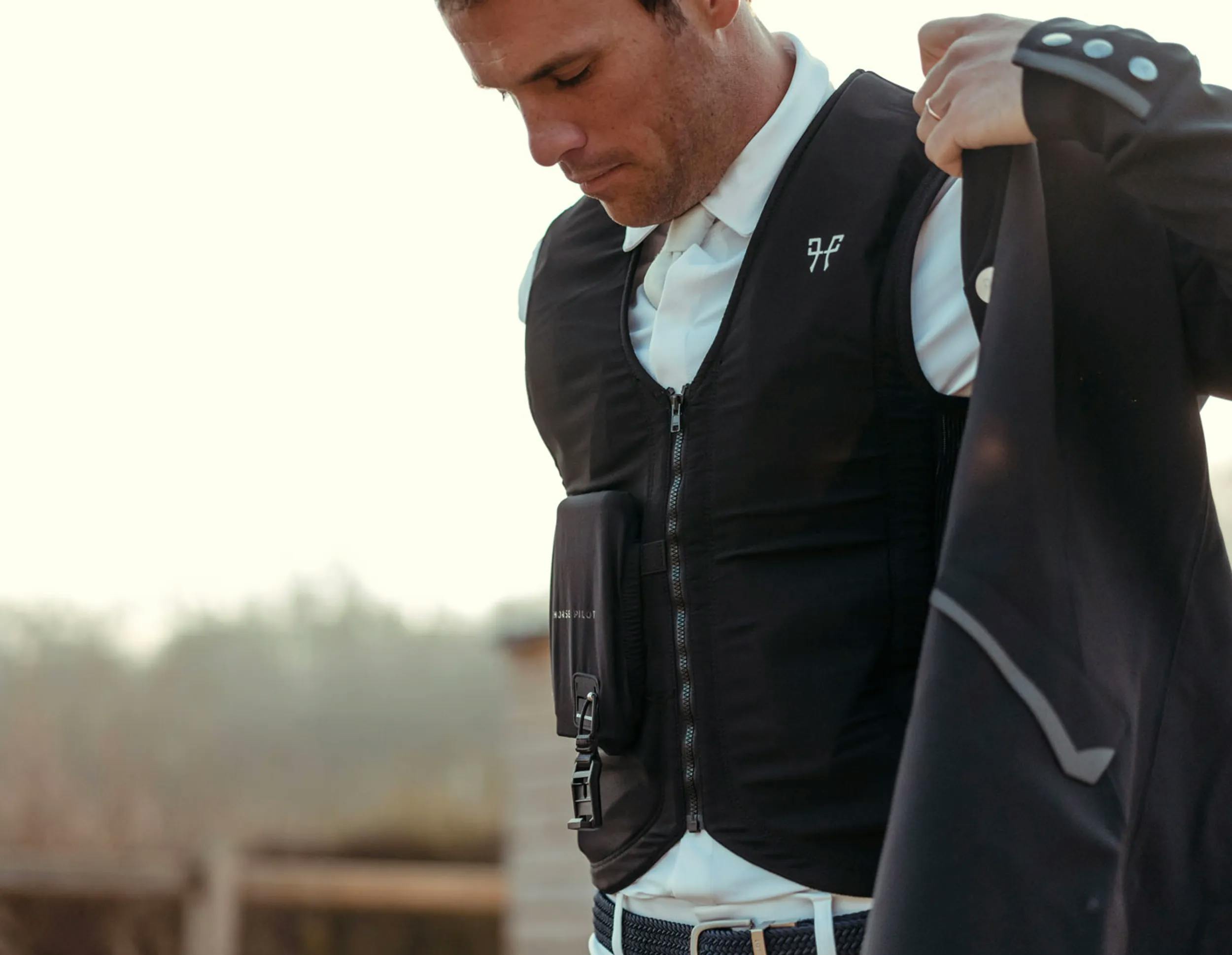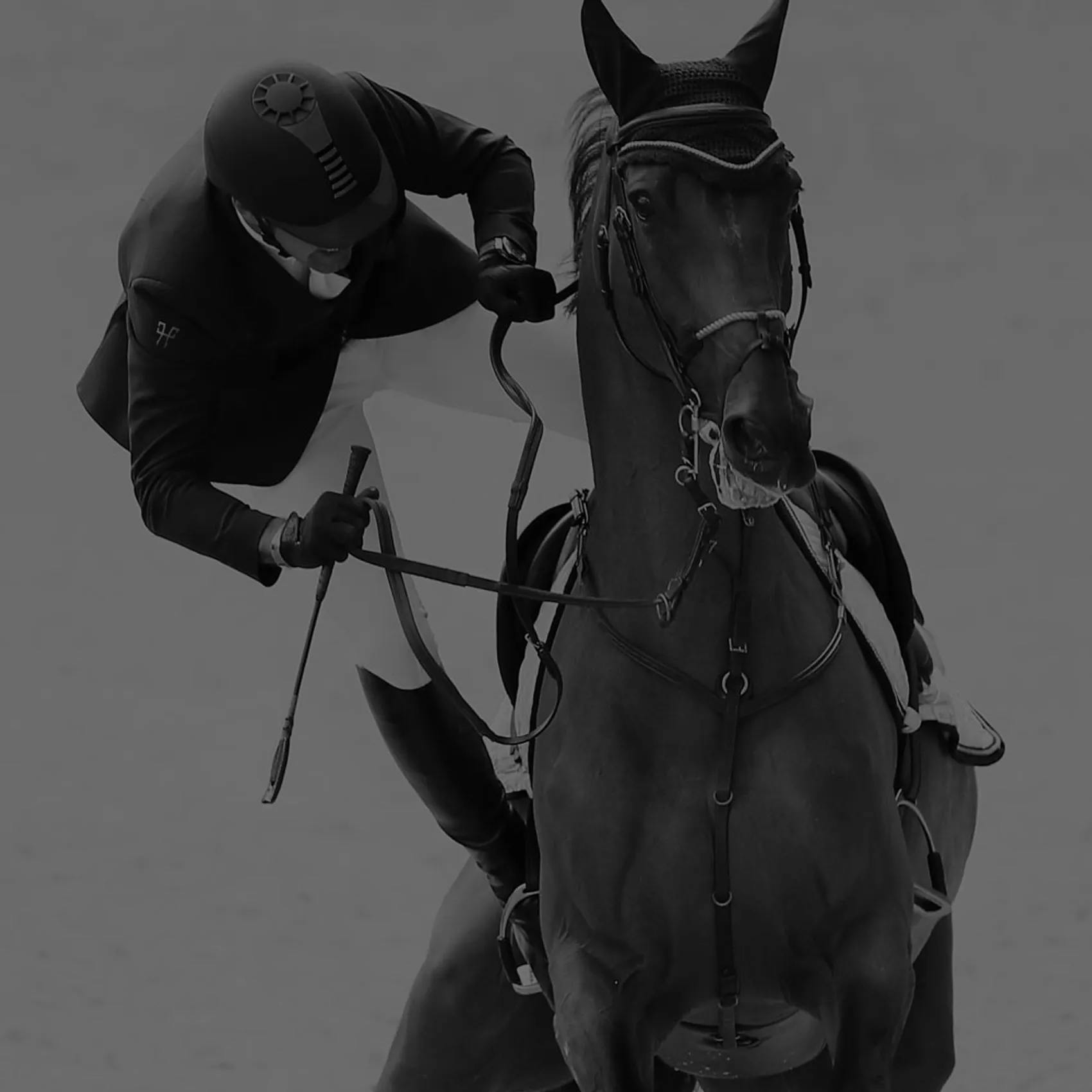TRAUMATOLOGY
Understanding fall injuries and improving rider protection

75% OF SEVERE INJURIES OCCUR IN AREAS PROTECTED BY THE AIRBAG.
Horseback riding is a dangerous sport at both recreational and high levels and interactions with horses can result in serious or fatal injuries. Whether on foot or on horseback, all injuries can reach significant levels of severity, but are likely to be different.
Along with head protection, upper body protection should be a priority for every rider. Indeed, it is obvious to wear a helmet, but 75% of the severe injuries (AIS4+) observed during falls on horseback affect the areas covered by airbags [1] and [6]. For this reason, Horse Pilot in association with In&motion has chosen to develop an airbag for horse riders.
AN AIRBAG THAT PROTECTS THE AREAS OF THE CHEST MOST AFFECTED BY A FALL FROM A HORSE
Thorax, abdomen, spine and neck.
THERE IS 1 INJURY FOR EVERY 1,000 HOURS OF RIDING.
Contrary to popular belief, there are fewer injuries due to equestrian activities than in other sports. While there are 6.1 injuries per 1,000 hours of sport in American soccer, there is only 1 injury per 1,000 hours of sport in horseback riding [1].
Conversely, the risk of serious injury and death in equestrian sports is higher than in other sports. Indeed, the mortality rate is estimated at 1 per 1 million people, the highest rate of any type of sport [2].
54% OF HORSE-RELATED INJURIES ARE DUE TO IMPACTS AFTER A FALL FROM A HORSE.

"THE MOST FREQUENTLY INJURED RIDER IS A WOMAN UNDER 30 YEARS OF AGE, VICTIM OF A FALL FROM A HORSE, IN THE CONTEXT OF A RECREATIONAL EQUESTRIAN ACTIVITY. "
In order to improve rider protection and reduce the 18.7 injuries per 100,000 interactions with horses (on average) [1]., it is essential to understand the circumstances of the accidents and identify the injury mechanisms.
Epidemiological and accidental studies [1].and [2] show that falling from the horse is the main cause of injury (54-63%) followed by kicking the horse (22-28%).
At the same time, interesting figures were found on the nature of the activity [1]: leisure and professional. Indeed, in the context of a leisure activity, the share of injuries on horseback is higher than on foot: 92% versus 68%. Conversely, in the context of a professional activity, the trend is reversed and the proportion of injuries on foot is greater than on horseback: 32% versus 8%.
"THE MOST SERIOUSLY INJURED RIDERS ARE CSO COMPETITORS WHO HAVE HAD A FALL FROM A HORSE AND WHOSE INJURIES ARE PRIMARILY TO THE TORSO."
.
It is easy to understand why falls in horseback riding can be very dangerous and even fatal for riders: at speeds of up to 65km/h, with the weight of the horse exceeding 450kg, with the force of the horse's foot hitting the ground up to 1,000kg, and with the rider's head being up to 2.7 meters off the ground, the human body can be subjected to very high and potentially injurious loads [3], [4] and [5].
The location of injuries due to a fall from a horse varies according to the level of lesion severity. If we focus on severe injuries (AIS4+), the most affected areas are the thorax (40%), the head (23%) and the spine (23%). Regarding the typology of trauma, the most observed injuries in the chest are rib fractures, vertebral fractures, clavicle fractures and pulmonary injuries [2].